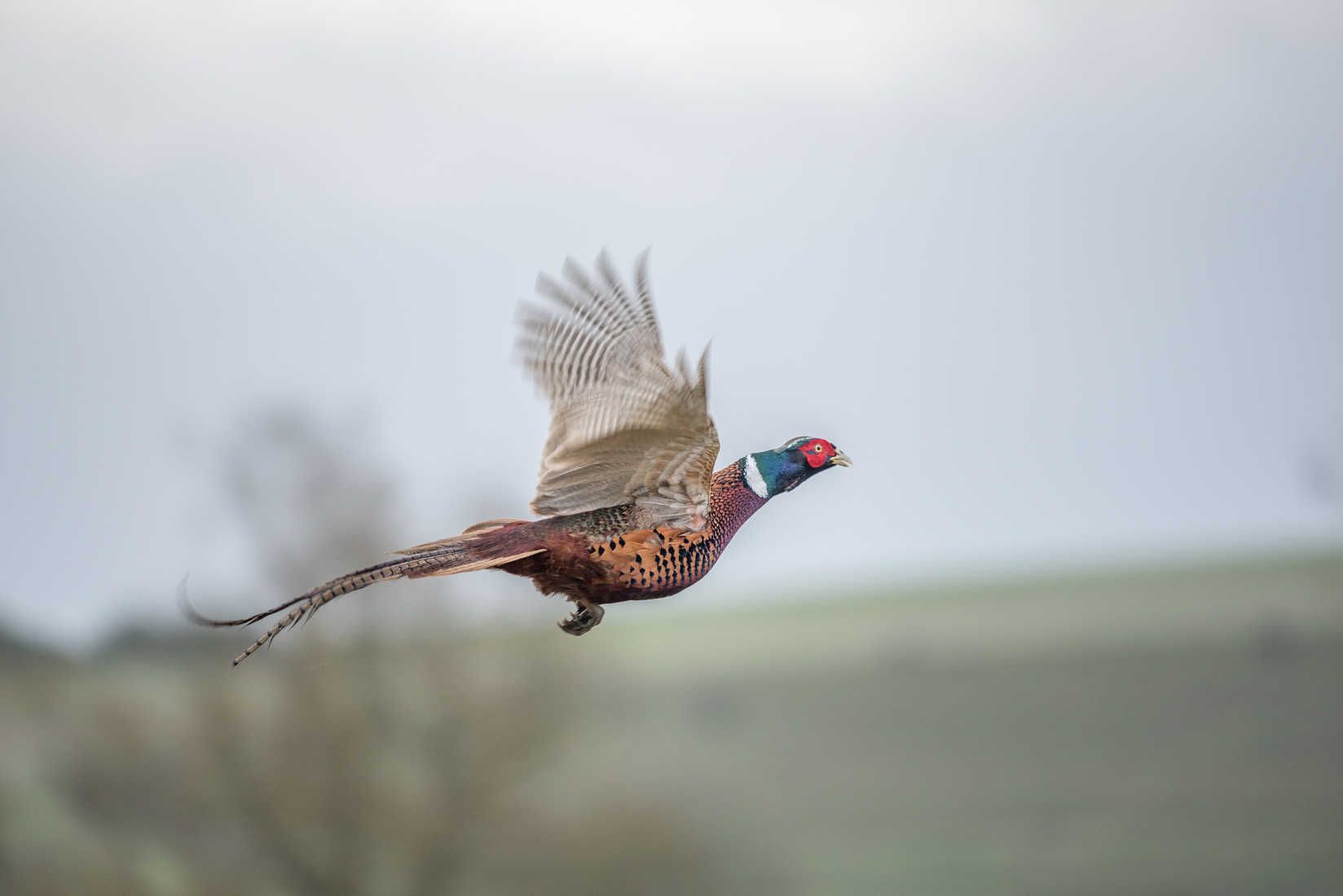By: Randy Tucker
My interaction with pheasants goes back over half-a-century. In the early days, I was the defecto retriever for my dad and grandpa in the woods surrounding the family cotton farm in Lee County, Arkansas.
Pheasants were common, but not as ubiquitous as quail along the edges of the original southern forest separating sections of my grandfather’s 35 acres of cotton and watermelon from other neighboring small farms.
Jump ahead to the tomato fields, and along the hedgerows surrounding almond orchards in northern California west of Sacramento a few years later, and I was still tagging along with my dad and his friends after west coast pheasants.
Pheasants are not a native bird; they originated in Asia, and were brought to the United States by hunting enthusiasts in the 1880s.
California pheasant hunting was great in the 1960s, but as with the remainder of life in the now not-so-golden state, it has diminished greatly with changes in agriculture and an influx of people that have erased much of the habitat they once called home.
My first individual forays after the ring necked roosters came as a teenager in Wyoming in the 1970s. I hunted pheasants, doves, ducks, geese, and rabbits with the same 12-gauge single-shot Iver Johnson shotgun. The full choke did the job, but sometimes it did the job too well, often blasting birds so hard with two and four shot lead that very little was edible.
As a college kid, there weren’t many places to hunt pheasants at the 7,200 feet of Laramie, much less the surrounding foothills of the Snowy Range that were substantially higher. Instead, we chased sage grouse, ducks, and rabbits on cold winter afternoons from October to the end of waterfowl season.
I paid $200 for a new 12-gauge Remington Model 870 shotgun in September 1980. It was a major purchase as a first -ear teacher. It didn’t have a ventilated rib and only chambered 2 ¾ inch shells, but it remains a great shotgun.
Bird hunting was limited around Lusk, in very rural Niobrara County, but just 60 miles south, along the Platte River in Goshen County, was a wonderland of waterfowl and pheasant hunting.
There were spots on the Platte and along ditches in farm fields around Yoder, Huntley, and Veteran full of ducks, and a substantial number of wild pheasants. A guy I coached football with had family in the area, and we often hunted the fields owned by his relatives.
The Wyoming Game and Fish Department has a special pheasant hunting area called the Springer Management Unit near the biggest town in the area, Torrington (population 4,000) with specific times and dates you were allowed to hunt. In the days before digital reservations, you called the unit, gave your name and license number, and requested a date and time to hunt.
It was an informal method of keeping the number of hunters down, since Springer was only 60 miles from Cheyenne, and just 100 miles from the burgeoning areas of northern Colorado.
I hunted Springer many times, always with memorable results.
One season, friends in the area called to tell me they were about to combine corn on the unit. This meant a lot of the area pheasants hid in would be exposed. It also meant the extra corn spilled on the ground by the combine would bring hidden birds out in the early morning and late afternoon to feed on the excess corn.
The hunting was fair, not great, as a couple of International Harvester combines gobbled up the rows of standing corn. The combines were accompanied by a fleet of grain trucks. The diesel engines growled through the morning air.
I noticed pheasants holding their position until the very last minute, then flushing to each side of the combines as the heads picked up the cornstalks.
Growing up on a farm, I knew the operator had enough to worry about without me trialing along beside him. A couple of clowns from Ft. Collins, Colorado either didn’t know that, or more likely, just didn’t care.
They began to walk just a few yards behind the combine on each side. They stayed far enough away to keep out of the reach of the chute as the harvested corn was shot out of the back of the machine, but they shot so close to the combine that an accident was bound to happen.
We stopped hunting to watch for a few minutes. Sure enough, one of the Greenies (as Wyomingites call Colorado pilgrims due to the older green license plates) traced the route of a flushed rooster, fired and missed the bird. He didn’t miss the glass of the combine.
The machine shut down in seconds, and a very angry operator jumped from the cab. The Colorado hunter was rattled, he started one way, then another, but finally just stood still.
The operator grabbed his shotgun, and though we were out of earshot, we could guess the language that flowed during the brief conversation.
The Greenie marksman, and his partner walked with heads bowed behind the operator a few hundred yards to the unit office.
We trailed behind until we saw the red shirt of a Wyoming game warden approach the trio. Their day was over, likely the season as well, with a hefty fine attached.
Thankfully, the operator wasn’t hurt. I’m sure the Greenies were about to buy a new glass for the combine, and we still had a few birds left to fill our tags.
All in all, a great morning of pheasant hunting along the eastern Wyoming border.
Randy Tucker is a retired history teacher and freelance writer from western Wyoming. He has a lifetime of experience in farming, ranching, hunting and fishing in the shadow of the Wind River Mountains. Contact him at [email protected].

